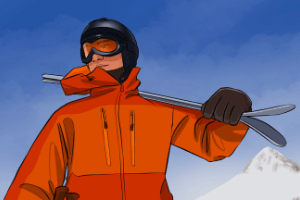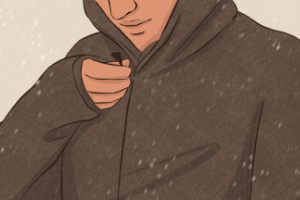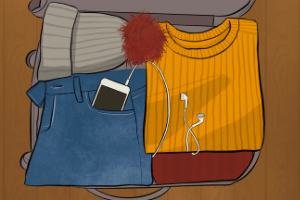What To Wear To A Ski Resort [Essential Outfit Checklist]
by Frank V. Persall
There's nothing more exciting than preparing for an upcoming trip!
That is unless you're completely stumped and stressed on what to wear— which can often be the case for first-timers heading to a ski resort.
That's why we've put together a primer of sorts, to help anyone prepare for an exciting and stress-free ski vacation!
Contents
![What To Wear To A Ski Resort [Essential Outfit Checklist]](http://snowgaper.com/blg/sgr/user_img/20210909/1631294306397907.webp)
First Things First
Being up on the mountain slopes, you know it's gonna be cold— but the weather and conditions will still vary depending on the resort's altitude and time of the year!
The first step?
Check the weather beforehand and call the ski resort you've booked to ask about the conditions on the mountain.
Other things to take into consideration are what activities you plan on doing while at the resort, and if you might travel to other places with the resort as your base camp.
Renting Vs. Buying Ski Gear

Upon the slopes, everyone is bundled up so much you won't be able to recognize them.
It's hard to tell who's who, but you have to be decked out in proper gear to keep you warm and enable you to actually traverse through the cold, wet snow!
Skiers and snowboarders alike will be wearing similar water-resistant clothing, although skiers tend to wear more form-fitting clothes.
What really sets them apart is, of course, their winter sports equipment!
Should You Rent or Buy?
A lot of what you'll need to fully enjoy a ski vacation can be found on sale or for rent at the ski resort, so the only thing to worry about is how much you'll spend.
There's really no need to invest in your own sports equipment unless you want to train for the sport seriously or plan on coming back often (perhaps you'll get yourself a season pass!).
I have written an in-depth guide about how much ski rentals cost here if you would like to conduct more research on the subject.
Skiis, Boards, Shoes
Of course, renting equipment will be much cheaper and easier logistically— plus, you won't have to break in new and stiff skiing shoes or snowboard boots either.
But it's important to note these shoes are meant to specifically conform to their user.
So while renting skis or a snowboard is feasible for the casual winter sports enthusiast, it's still recommended you buy your own shoes.
Armed with a good pair of shoes, you can confidently rent out any pair of skis or snowboard! Just remember that ski shoes and snowboard boots can't be used interchangeably.
Headgear
Whether it's skiing or snowboarding, safety ALWAYS comes first!
All types of accidents can happen in the snow, and with tons of other people zooming down a mountain slope, you'll want to have a helmet on in case of a crash.
Again, as a newbie skier, there's no reason to buy your own ski helmet— just be sure to always have one on when you ski!
If the helmet doesn't already have goggles attached to them, definitely rent out a pair of ski goggles.
They'll make sure your eyes are protected from the cold and harsh wind as you zoom down the slopes.
After your first trip, if you find yourself wanting to ski or snowboard more often, definitely start thinking about buying your own equipment!
What You Should Be Wearing To A Ski Resort
Besides your winter sports equipment, there are things you'll want to pack for a cold, snow-filled mountain getaway.
Ideally, you'll want to be wearing 3 layers for snow-related activities: the base layer, mid-layer, and outer layer.
1. Outerwear

Being warm and dry go hand in hand in the snow, so having a water-resistant outer layer is important.
Ski Pants & Jackets
This outermost layer is perhaps the most important thing to consider when preparing for a ski trip.
It's definitely going to cost a bit more, but you won't regret investing in a good set.
You'll want both your ski pants and ski jacket to be durable, waterproof, and breathable.
Jackets and trousers will also protect your other layers from the cold and wet snow, so be sure to look for ones with a HIGH waterproof rating.
Preferably, you'll look for jackets and trousers with a waterproof rating of 10 kmm and above, and a breathability rating of at least 8 kmm.
Ski Gloves
For skiers, ski gloves are arguably just as important as your skis and shoes. Exposed skin is cold skin so bring a pair of gloves or mittens!!!
You don't want to risk ice burns when you're playing around in the snow all day— trust us.
Since mittens keep your fingers huddled together, they'll definitely generate more heat but keep in mind that compared to gloves, mittens will rob you of your finger dexterity.
Because of this, skiers might opt for gloves for a better hold on the ski poles.
If you plan on just snowboarding, warm and water-resistant mittens will do.
However, a good pair of gloves is also a good investment since gloves can be worn and used for various other activities aside from snowy mountain sports.
Gloves or mittens aside, be sure they are made of warm and water-resistant materials!
Neck Gaiter or Face Mask
Again, exposed skin is cold skin! You'll want to bring a neck gaiter or face mask to protect these parts of your body from the cold.
The chin, nose, cheeks, and ears are all prone to frostbite so you'll want to protect them and keep them warm.
A neck gaiter is worn similarly to a loop or infinity scarf, while a face mask or balaclava will completely cover your head, exposing only your head and mouth.
Choose whichever is more comfortable for you, but be sure to bring one along!
2. Innerwear

Time to talk about the base layer and inner insulating layer that will keep you comfy and warm in the snow!
Extra warmth doesn't always mean extra weight or bulk, and it would be good to invest in A-grade inner thermal clothing.
Something like Uniqlo's Heattech line will hug your body and is extra warm, flexible, and thin enough to fit under all your other layers. It's affordable too!
After the body-hugging layer, you can put on a fleece jacket or fleece pants for extra insulation against the cold.
However, fleece pants can be bulky and heavy, so you might want to rely on just your thermal pants if you can handle them.
Protecting Your Feet
Thick socks will not only keep your feet warm and dry, but they'll provide some cushion and prevent friction when you wear skiing shoes or snowboard boots.
You don't want any layers to be too thick they'll restrict too much movement, but luckily there are thinner thermal socks available too.
Your toes will also be prone to frostbite, so invest in a good pair of socks!
3. What to Wear Off the Slopes

Though it's not frowned upon, if you were to wear skiing clothes your entire stay at the resort, it can feel a bit silly when you're seated at a nicer restaurant.
Most ski resorts are pretty casual, though you may encounter a restaurant or exclusive area that may require smart casual or even more formal dress codes.
Be sure to bring at least one set of smart casual winter clothing you can mix and match to be more or less formal as required.
Want to Pack Light?
With it being so cool and dry, re-wearing clothes won't cause you to smell.
You can easily reuse one set of outerwear as long as you hang them to dry, but you might need to bring a few more layers to wear underneath.
Even though it's cold, you'll still work up a sweat when you ski or go snowboarding!
4. Unexpected Essentials

Upon the mountain, you might find you need more than a good jacket or pair of socks to protect you from the cold.
Too many jackets and thick, heavy pants will restrict your movement so in case it gets too cold for you to bear, bring out the heat gel packs!
They're small and reusable so they'll be easy to carry around in your pocket or bag.
Skincare
Even in harsh cold weather conditions, you have to protect yourself from the sun!
People often forget to put on sunblock thinking the cold will prevent sunburns, not realizing snow will reflect the sun's UV rays.
Even in cloudy weather, the sun's UV rays will penetrate through so be sure to apply sunblock!
Be sure to bring moisturizers, balms, or oils to prevent any severe chapping.
Chapped lips and hands are common when you're bracing strong, cool, and dry wind.
Traveling to & From a Warmer Climate
Pack your thermals, socks, gloves, and jacket in your in-cabin bag!
These particular items won't be too bulky to pack but will also be enough to bring you warmth when you arrive at your destination.
You can also bring some heat gel packs for extra warmth.
If you're traveling FROM a cool place, wear a lighter layer underneath so you can simply take off your jacket upon arrival.
The good thing about layers is you can choose how to wear them to accommodate different climates.
Excited For Your Trip Yet?
Just thinking about what to bring to a trip can be so exciting!
We hope this helped make your trip preparation a lot easier and got you excited for your upcoming snowy escape.
Don't Forget!
Make sure to do some research on the ski resort you're going to and call ahead so you can be fully prepared.
If you want to learn more about skiing and get into the specifics of the best ski gear available, check out our best of roundup posts!
Related Posts:
How To Become A Ski Instructor
When Is The Best Time To Buy Ski Gear
 |
 |
 |
 |

About Frank V. Persall
Frank is originally from the UK, but he has a passion for skiing that knows no bounds. He has made it his life's mission to visit the best ski resorts across the USA and the World. Frank loves spending time with his wife and three children on ski slopes, as they all share his love for the activity.
Thoughts on "What To Wear To A Ski Resort [Essential Outfit Checklist]"
 |
 |
 |
 |
You can get FREE Gifts. Or latest free skiing books here.
Disable Ad block to reveal all the info. Once done, hit a button below
 |
 |
 |
 |